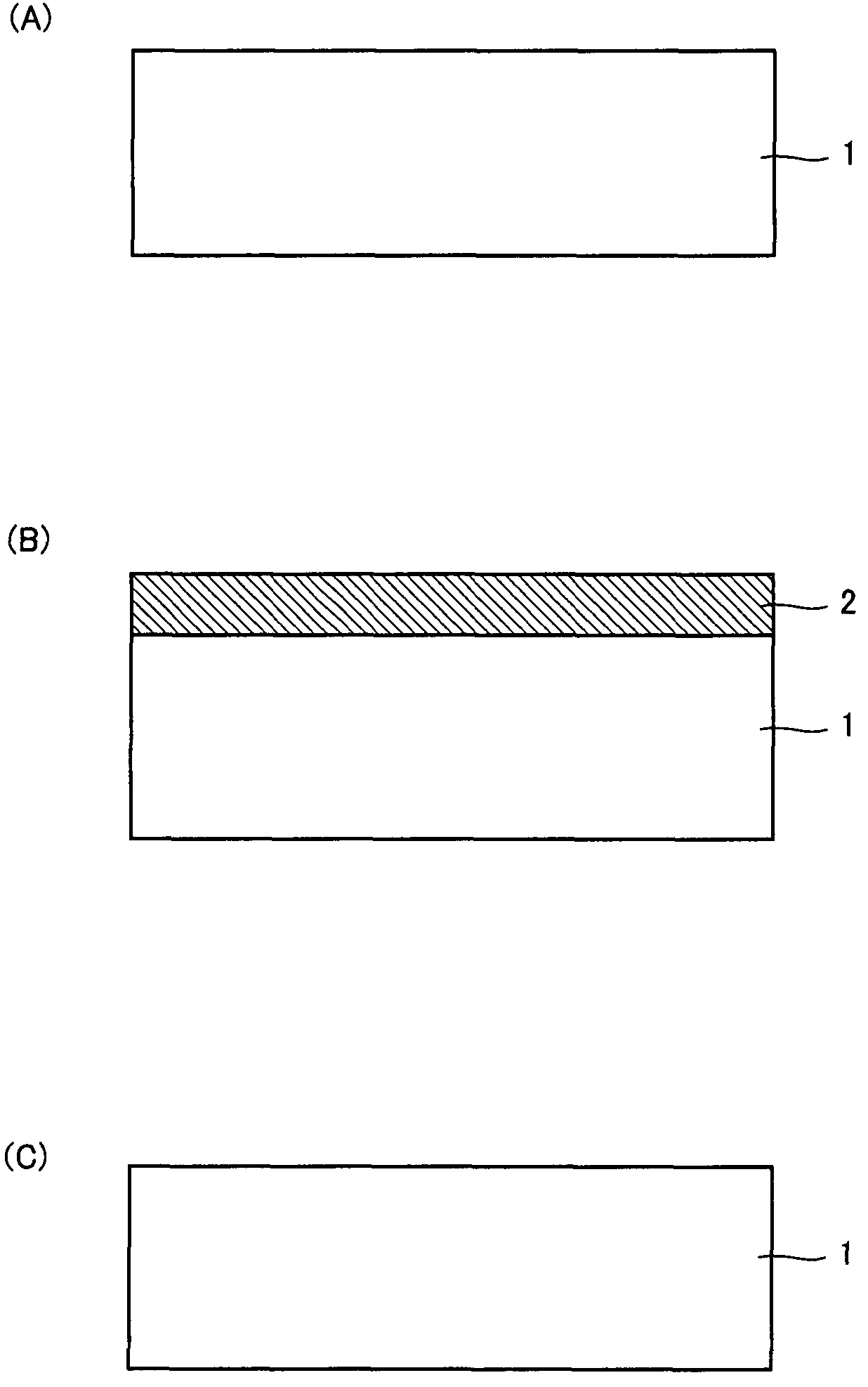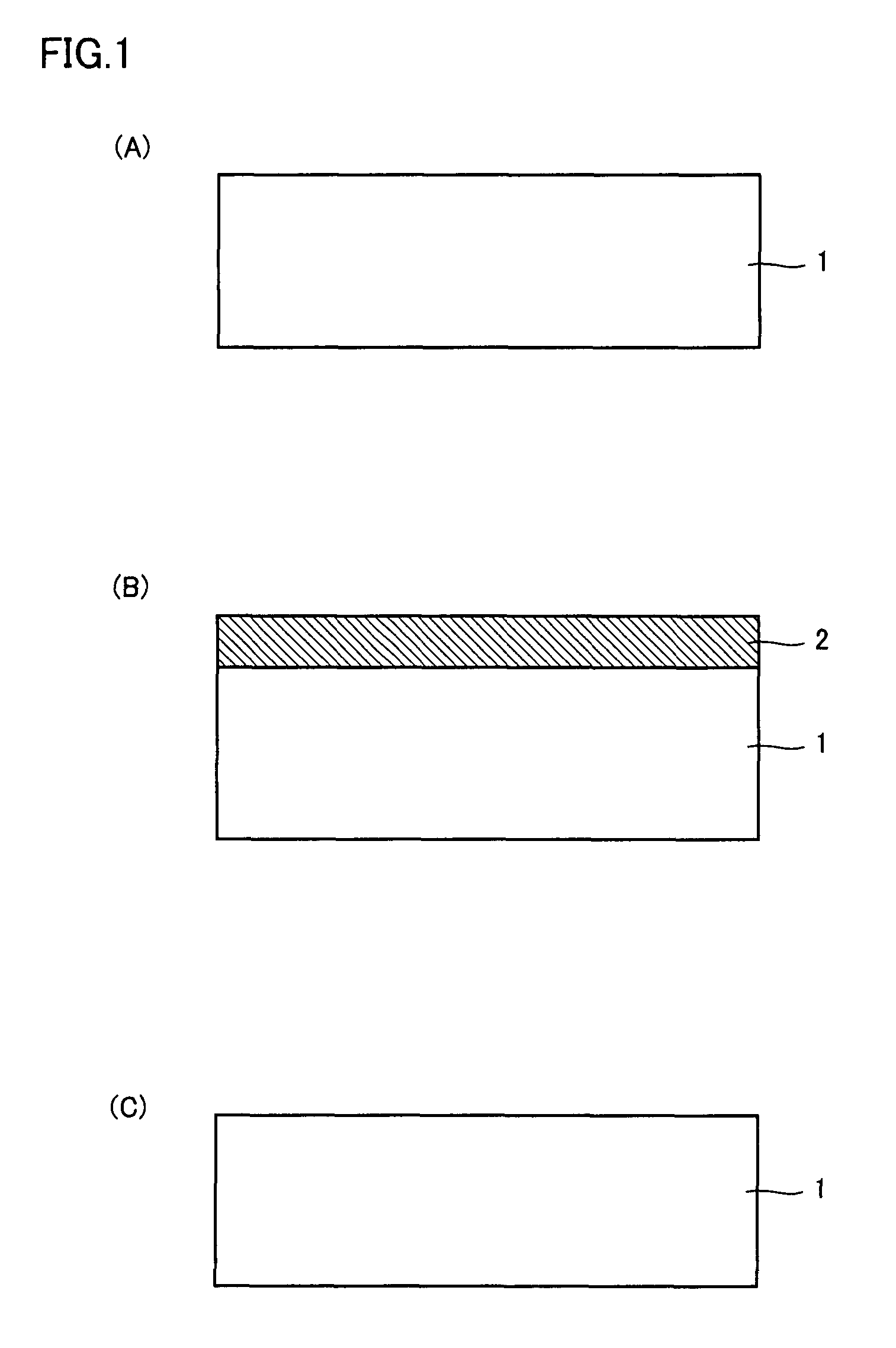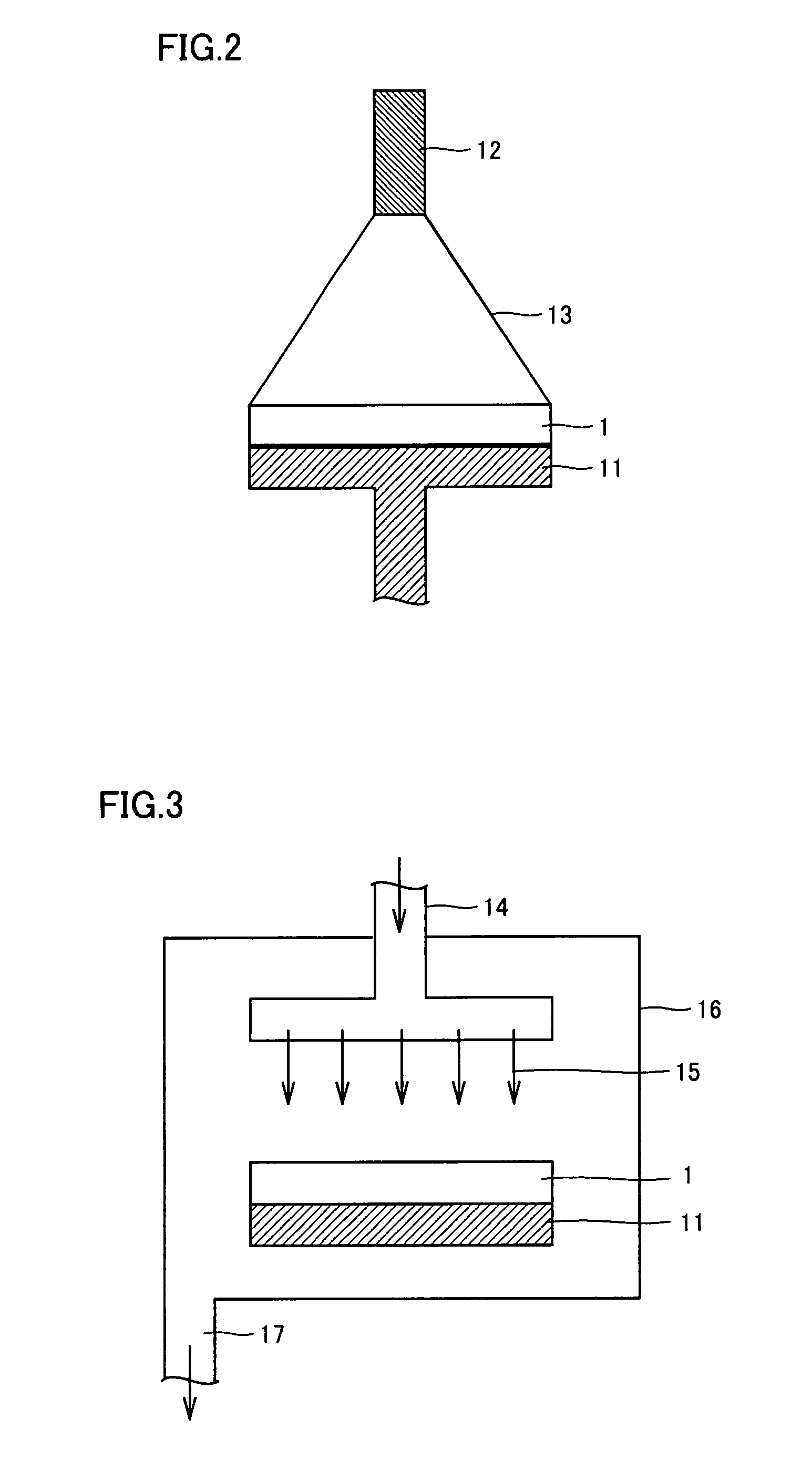Surface reconstruction method for silicon carbide substrate
- Summary
- Abstract
- Description
- Claims
- Application Information
AI Technical Summary
Benefits of technology
Problems solved by technology
Method used
Image
Examples
example 1
[0033]First, a silicon carbide substrate made of a commercially available hexagonal silicon carbide crystal and in the shape of a disk with a diameter of two inches was prepared. For an off-plane inclined by 8° in the [11-20] direction with respect to the (0001) plane of the surface of the silicon carbide substrate, the micropipe density (number of micropipes / cm2) was checked by a method using-light scattering to find that the micropipe density was 96 (micropipes / cm2).
[0034]Next, on the off-plane of the silicon carbide substrate, a silicon film was formed by sputtering to a thickness of 100 nm. Then, in a heat-treatment furnace of an argon gas atmosphere at a pressure of 1×105 Pa, the silicon carbide substrate and the silicon film were heat-treated at 1500° C.
[0035]Finally, the silicon film was removed by means of a liquid mixture of hydrofluoric acid and nitric acid. The micropipe density of the off-plane of the silicon carbide substrate from which the silicon film had been removed...
example 2
[0037]First, as Example 1, a silicon carbide substrate made of a commercially available hexagonal silicon carbide crystal and in the shape of a disk with a diameter of two inches was prepared. For an off-plane inclined by 8° in the [11-20] direction with respect to the (0001) plane of the surface of the silicon carbide substrate, the micropipe density (number of micropipes / cm2) was checked by the same method as that of Example 1 to find that the micropipe density was 92 (micropipes / cm2).
[0038]Next, on the off-plane of the silicon carbide substrate, a silicon film was formed by sputtering to a thickness of 100 nm as Example 1. Then, in a heat-treatment furnace of an argon gas atmosphere at a pressure of 1×105 Pa, the silicon carbide substrate and the silicon film were heat-treated at 1500° C.
[0039]Subsequently, in a heat-treatment furnace of an oxygen atmosphere at a pressure of 1×105 Pa, the silicon carbide substrate and the silicon film were heat-treated at 1300° C. to produce a si...
example 3
[0040]First, as Example 1, a silicon carbide substrate made of a commercially available hexagonal silicon carbide crystal and in the shape of a disk with a diameter of two inches was prepared. For an off-plane inclined by 8° in the [11-20] direction with respect to the (0001) plane of the surface of the silicon carbide substrate, the micropipe density (number of micropipes / cm2) was checked by the same method as that of Example 1 to find that the micropipe density was 95 (micropipes / cm2).
[0041]Next, as shown in the schematic cross section of FIG. 2, onto the off-plane of silicon carbide substrate 1 mounted on a substrate holder 11 and heated to 1500° C. in an argon gas atmosphere at a pressure of 1×105 Pa, a liquid hexachlorodisilane (Si2Cl6) 13 as atomized was sprayed from a spray 12. Thus, on the off-plane of silicon carbide substrate 1, hexachlorodisilane 13 was thermally decomposed to form a silicon film on the off-plane of silicon carbide substrate 1 and, simultaneously, silicon...
PUM
| Property | Measurement | Unit |
|---|---|---|
| temperature | aaaaa | aaaaa |
| temperature | aaaaa | aaaaa |
| thickness | aaaaa | aaaaa |
Abstract
Description
Claims
Application Information
 Login to View More
Login to View More - R&D
- Intellectual Property
- Life Sciences
- Materials
- Tech Scout
- Unparalleled Data Quality
- Higher Quality Content
- 60% Fewer Hallucinations
Browse by: Latest US Patents, China's latest patents, Technical Efficacy Thesaurus, Application Domain, Technology Topic, Popular Technical Reports.
© 2025 PatSnap. All rights reserved.Legal|Privacy policy|Modern Slavery Act Transparency Statement|Sitemap|About US| Contact US: help@patsnap.com



